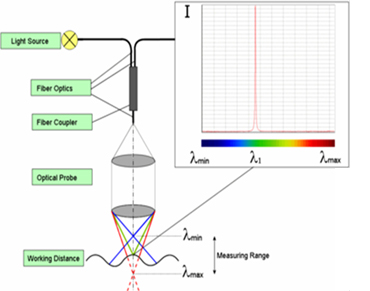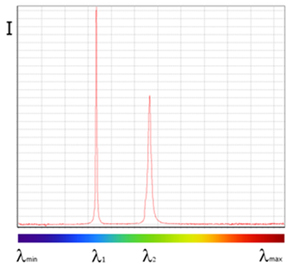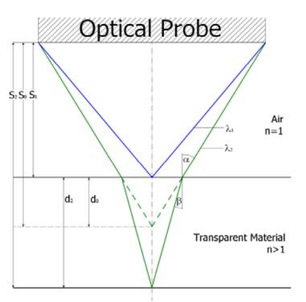
A white light source is used to illuminate the surface of a part. The light travels via fiber from the CHRocodile control unit to an optical probe which then spreads the focal length over a discrete number of points creating a full spectrum of light as shown in the graph. Based on the wavelength of the reflected light, a very precise distance measurement can be taken up to 66,000 times per second. The optical probe determines the measuring range, or focal depth of the spectrum. Because of the high numerical aperture of the probes and dynamic range of the sensor, it is possible to measure on nearly all materials

Using a white light source, the sample is illuminated, and the reflected beams correspond to two distance measurements. Based on the optical properties of the material, it is then possible to determine the physical thickness of the sample. This measurement happens at the speed of light, so is not susceptible to variations from mechanical vibration, or ambient conditions. Because it is a white light measurement, the sample must be somewhat transparent to that light. Optical probes with a high acceptance angle, up to 45°, are available for measurement on rough parts or when conditions limit the ability to control the probe to surface angular relationship. By combining the two distance measurements with the thickness value, it is possible to monitor multiple parameters simultaneously. Some of those values can include surface topography, ovality, roughness or shape.

